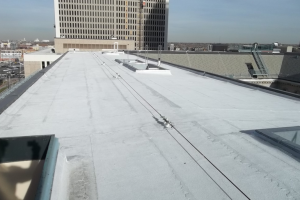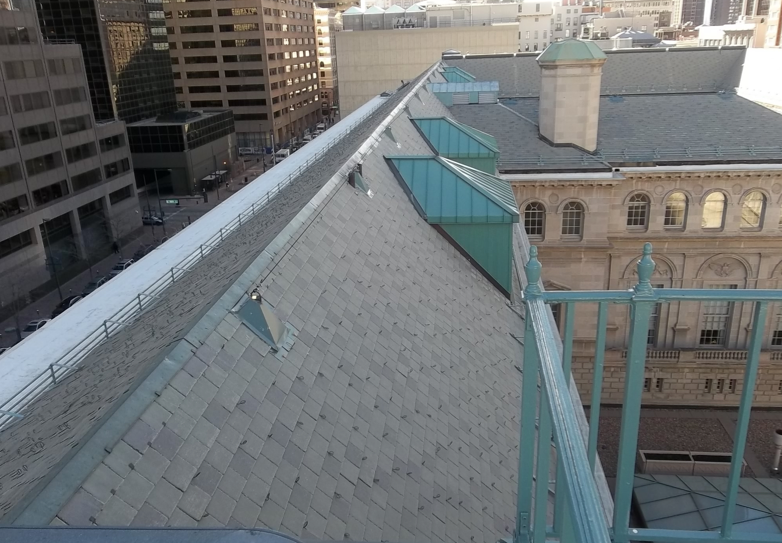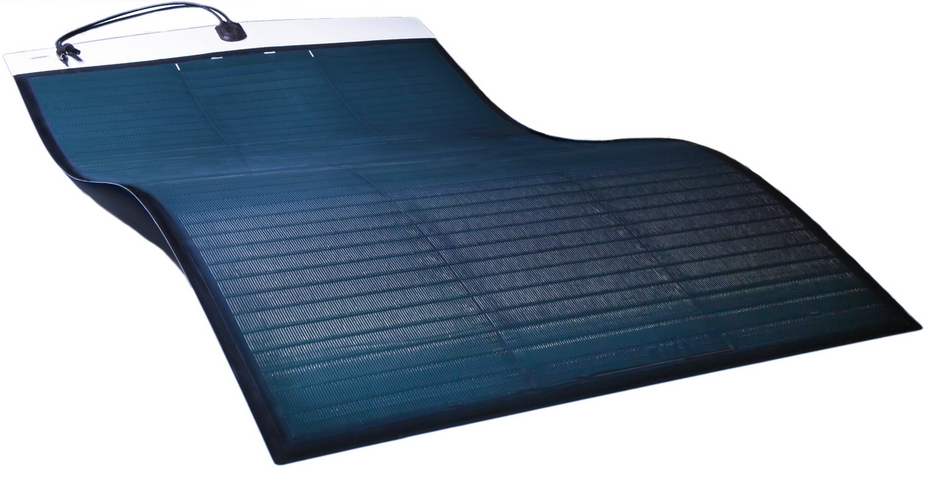Roofs, first and foremost, keep water and the elements out of a building. The roofing industry has done this quite well since the modernization of buildings began more than a century ago. Along the way, a number of trade associations—ARMA, ERA, MCA, NRCA, PIMA, SPFA, SPRI—have formed and evolved as materials and trends have changed. Each group provides excellent information relative to its mission and goals. Yet we know change keeps coming.

THE BYRON WHITE COURTHOUSE, DENVER, features a RoofPoint-certified high R-value (R-30) roof for energy savings. A dual-reinforced Derbigum modified bitumen membrane, 90-mil base sheet and a high-density coverboard were installed.
Serving as a unified voice for issues involving roofing, energy and the environment, the Center for Environmental Innovation in Roofing was established in Washington, D.C., in 2008. The non-profit organization’s focus is to advocate and promote the use of environmentally friendly, high-performance roof systems, not just within the U.S., but in North America and globally. The center is a member-based association consisting of roofing manufacturers, roofing contractors, roofing consultants, raw-material suppliers and other trade groups within the roofing industry.
To promote the sustainability of roof systems, the center develops resources, products and educational information that can be used by the building industry to advance the longevity, durability and overall sustainability of roofs. Increased awareness of the importance of a building’s roof is critical to the center’s mission. The roof can be a large contributor to the energy efficiency of the building, a long-term asset and, increasingly, a location for energy production (solar, wind).
ROOFPOINT
The center’s premier program is RoofPoint, a guideline for environmentally innovative nonresidential roofing. RoofPoint is used to evaluate new and replacement roofs for commercial and institutional buildings based on their environmental performance during the life cycle of the building the roof covers. This provides a useful measure for what constitutes a sustainable roof during design, construction, operation and decommissioning.
RoofPoint is primarily a rating system, and when certain minimums are met, a roof can become a RoofPoint Certified roof. Certificates and plaques noting RoofPoint certification can be awarded and used to validate a commitment to sustainability and the environment.
RoofPoint is based on current state-of-the-art processes and methods, remaining technology neutral. It does not rank or prioritize materials or systems; however, RoofPoint emphasizes energy efficiency and long-term performance and durability as overarching key attributes of a sustainable roof. Material recycling and reuse, VOCs, water capture and reuse, hygro-thermal analysis, and operations and maintenance are a few of the categories within RoofPoint.




Be the first to comment on "A Trade Association Brings Roofs to the Sustainability Discussion"